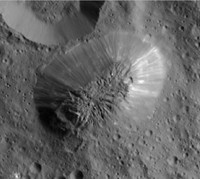Advertisement
Grab your lab coat. Let's get started
Welcome!
Welcome!
Create an account below to get 6 C&EN articles per month, receive newsletters and more - all free.
It seems this is your first time logging in online. Please enter the following information to continue.
As an ACS member you automatically get access to this site. All we need is few more details to create your reading experience.
Not you? Sign in with a different account.
Not you? Sign in with a different account.
ERROR 1
ERROR 1
ERROR 2
ERROR 2
ERROR 2
ERROR 2
ERROR 2
Password and Confirm password must match.
If you have an ACS member number, please enter it here so we can link this account to your membership. (optional)
ERROR 2
ACS values your privacy. By submitting your information, you are gaining access to C&EN and subscribing to our weekly newsletter. We use the information you provide to make your reading experience better, and we will never sell your data to third party members.
Physical Chemistry
Ironing Out Mercury's Makeup
Planetary Science: New results from spacecraft flyby show iron-rich surface
by Elizabeth K. Wilson
November 9, 2009
| A version of this story appeared in
Volume 87, Issue 45

The surface of Mercury, believed to be curiously deficient in iron even though the planet has an enormous iron core, might instead be rich in iron and titanium, according to new data collected by NASA’s Messenger spacecraft. The finding could force scientists to retool models of the planet’s formation and evolution.
Scientists reported the first direct elemental abundance measurements of Mercury’s surface at a press conference on Nov. 3. Messenger captured the data with its neutron spectrometer during the craft’s third and final flyby of Mercury. In the coming months, Messenger will settle into orbit around the planet to begin mapping it in detail in 2011.
The neutron spectrometer’s detection of an iron-rich surface contradicts other, less definitive data from Messenger’s first flyby two years ago (C&EN, July 28, 2008, page 65). Understanding how the new results affect theories about Mercury’s formation “will keep people busy for awhile,” said Messenger mission scientist David Lawrence of Johns Hopkins University Applied Physics Laboratory at the conference.
The new iron-rich picture of Mercury’s surface that’s emerging resembles that of Earth’s moon, Lawrence said.
An error during the flyby caused Messenger’s power to turn off, and as a result, the team acquired only about 50% of the data they’d hoped for.
But in addition to the neutron spectrometer measurements, Messenger imaged most of the planet, including 6% of the surface that has never been explored before. In one striking image, a double-ring basin 290 km in diameter resembles a feature discovered during the first flyby, known as the Raditladi basin. Both features, which are believed to be volcanic in origin, are only about a billion years old, a fact that bolsters evidence for recent volcanism on the planet, said Brett W. Denevi, a Messenger mission member and postdoc at Arizona State University, Tempe, at the conference.





Join the conversation
Contact the reporter
Submit a Letter to the Editor for publication
Engage with us on Twitter